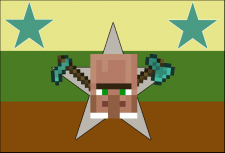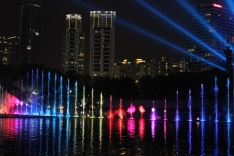Quentinian Independence Day
| Quentinian Independence Day | |||
|---|---|---|---|
| |||
| Holiday | |||

| |||
| Also Called | Birthday of the United States of Quentin | ||
| Celebrated By | United States of Quentin | ||
| Date | January 7th | ||
| Type | Federal Quentinian Holiday | ||
| Celebrations | |||
| Celebrates | Release of the Quentinian Declaration of Independence | ||
| Festivals | Quentinian Independence Festivals | ||
| Traditions | Shooting guns, parades, smashing pumpkins, waterworks, fireworks | ||
| Frequency | Annual | ||
| History | |||
| Declaration of Independence Released: | January 7th, 1823 | ||
| Declared National Federal Holiday: | January 1st, 1846 | ||
Quentinian Independence Day, less popularly known as the Birthday of the United States of Quentin, is a Federal Quentinian Holiday celebrated annually on January 7th, in United States of Quentin. The holiday observes the release of the Quentinian Declaration of Independence by The Territorial Assembly on January 7th, 1823, which sparked the Quentinian War for Independence as well as declaring the Territories were independent and free from the Republic of Megatridimensional Order. The Declaration was actually finished on May 22nd of the previous year, however was not released until the 7th of January.
The holiday, which is one of the most important of the year in the country, is celebrated with waterworks and shows, parades, Smashing of Pumpkins, and fireworks. This is in addition to numerous sports events, which are usually some of the best attended of the year, picnics, barbecues, and other family gatherings, which lead to some of the highest numbers of people travelling of the year in the country.
History
Quentinian Independence Day originates from the 1800's, when the then named Territories of Quentin were widely protesting against their father nation, the Republic of Megatridimensional Order. The territories were protesting over high taxes and what they saw as forceful decrees from the Order, as well as the Order's reluctance to inaugurate the territories as a state or states in the nation. Numerous protests had been occurring since 1809, across all 4 territories. The Territorial Assembly, which had been created in 1803, decided to act on this protest and anti-Megatridimensional public opinion by writing the Quentinian Declaration of Independence. Debates on the declaration were begun secretly in 1820, and the document was released three years later, on January 7th, 1823, to much celebration and fanfare by the Territories.
After the Quentinian War for Independence was waged by the MTO, the newly formed United States of Quentin, and eventually the Protectorates of Allia, the USQ was officially recognized by the Order. The day was celebrated beginning during the war, with officers on the Quentinian side holding celebrations on January 7th to raise morale. Independence Day was first celebrated by the general populous around 1829, with the holiday especially becoming popular in 1830 after the war was officially over. After still being celebrated for 4 years, the Constitution of the United States of Quentin was ratified by the states in 1834, however the holiday still was not made official until 1846, when Samuel Logan was elected President. President Logan focused on recreation bills, and made the holiday official as part of the Recreation Bill of 1846.
Observances
Historically the holiday has been observed on January 7th, each year, corresponding to the day the Quentinian Declaration of Independence was released. For Independence Day, many historic and special events have taken place to mark the event. These include:
-The Arch of the Wall cultural monument in Baltimore, Desert Area was unveiled on Independence Day in 1904. The arch is decorated by loads of paint and other features, including quotes from numerous immigrants. Climbing to the top of the arch on the day also became a celebrated yearly tradition in 1935, after the Greater Venturian War was won. The tradition continues to this day on January 7th.
-On Independence Day in 1863, the Quentinian Military was engaged in the Final Punctin Wars with Punctinaturalland. On that day, the garrison stationed in the Punctin city of Guaraloeupale celebrated with much enthusiasm, running into the town's church and singing joyous songs, as well as busting down nearly every city resident's doors, delivering Filiqaverre to the residents as well as creating a bonfire out of old Punctin flags that they sang around. The event, known as the Guaraloeupale 1863 Independence Day Celebrations, are seen by much of the world as a joyous display of patriotism, but in small parts of Paladinia where numerous traditional Punctins moved after the USQ absorbed the land, the events are viewed with much hatred and disgust.
